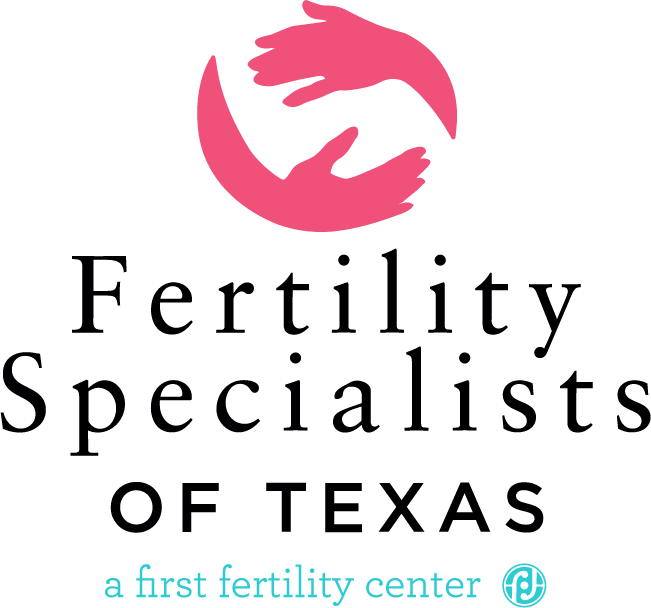A new study has shown that there may be fertility effects from a woman’s progesterone level during specific phases of an in vitro fertilization (IVF) cycle. Consequently, the physicians and staff at Fertility Specialists of Texas have worked to modify protocols which have led to higher success rates for our patients.
Fertility and Progesterone
IVF is very time sensitive and a successful IVF treatment cycle requires accurate timing for each step of the protocol:
- The stimulation phase where many follicles are maturing.
- The retrieval phase where the mature eggs are retrieved.
- The insemination phase in which the egg is inseminated with sperm in the laboratory.
- The observation and development phase where each embryo is closely monitored in the embryology lab for 3-6 days.
- Finally the embryo transfer phase where the good quality embryo(s) are transferred back into the woman’s uterus.
If it appears that the progesterone level at the time of HCG trigger is elevated, your physician may discuss with you freezing all embryos on day five. The purpose of this is to allow your ovaries to go back to the resting state and be able to more precisely time the embryo transfer to maximize the probability of successful transfer.
Progesterone Levels May Influence Fertility
A 2012 study revealed that there seemed to be a link relating to a patient’s progesterone level at the time of her “trigger shot” and a reduction in implantation and pregnancy rates. Therefore, higher progesterone levels at the time of the trigger shot produced a decrease in successful cycles.
Later, a meta-analysis of a group of studies showed that a higher progesterone level before the trigger shot lowered the success rate for the patient’s IVF cycle. The experience at Fertility Specialists of Texas also confirms that higher levels of progesterone just before the trigger shot can lower the success of an IVF cycle.
The physicians at Fertility Specialists of Texas decided that this is important data and may modify a patient’s treatment protocol in order to decrease the negative effect on her IVF cycle if necessary.
The Role of Progesterone
Progesterone is a hormone created by a woman’s ovaries. This important hormone facilitates embryo implantation in the womb.
Progesterone is naturally released with a woman’s menstrual cycle. Ovulation regulates the when progesterone is produced.
With IVF, egg retrieval replaces ovulation. The trigger shot controls the timing. The trigger shot is either hCG or Lurpon. A progesterone prescription after retrieval of the eggs provides additional progesterone normally created after natural ovulation.
How Fertility Specialists of Texas Increases Success Rates
Progesterone is monitored in an IVF cycle when the patient is stimulated. If the levels of this hormone become too high before the trigger shot, your reproductive endocrinologist may suggest that all of the patient’s embryos be frozen and saved for another IVF cycle.
Making the decision to freeze because of prematurely rising progesterone levels can only be made close to the end of the IVF cycle. The physician monitors the progesterone level closely and if a rise is seen, they will decide what the best strategy is for the patient and share it with the patient. Occasionally, transferring the embryos may the best choice, while at other times the decision could be to transfer embryos that might not freeze well in order to give them a chance to implant.
Ultimately the decision to transfer or freeze belongs to the patient but your physician will consult with you to help you make the decision.
What Does “Freezing Embryos” Mean?
Vitrification (or “freezing”) is the newest technique for freezing eggs or embryos used in IVF procedures.
The latest advances in vitrification technology have allowed frozen embryo success rates to be almost as high as using fresh embryos.
Using vitrification, IVF patients can delay transfers into the future with results almost identical to a fresh embryo transfer.
With advanced vitrification, transfers can be spaced out, giving every embryo a better possibility of creating a pregnancy.
After the embryos have been vitrified a frozen embryo transfer (FET) cycle can be scheduled for another time in the future.
Frozen Embryo Transfer
The FET cycle usually takes place in the next month during a woman’s menstrual cycle.
Steps in a FET cycle include:
- The endometrial lining is first prepared with estrogen.
- Progesterone is started on a selected day which allows synchronization of the uterus with the frozen embryo.<



